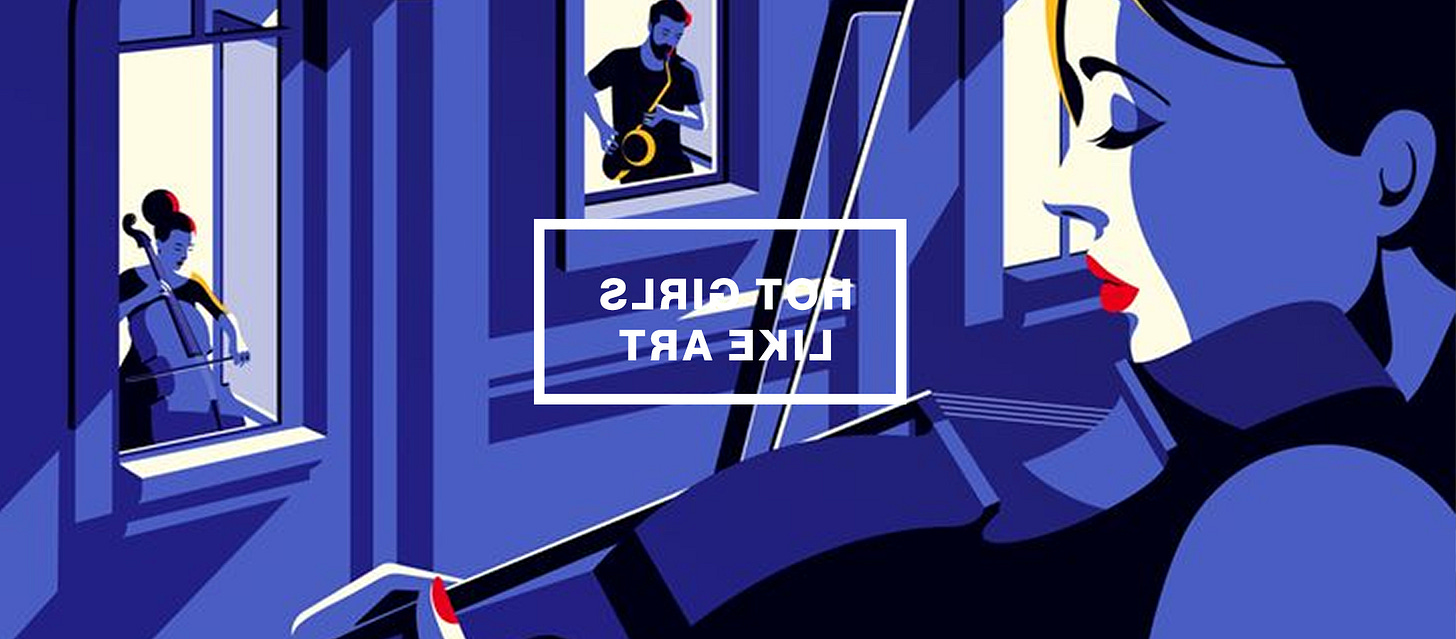HGLA #90 - I'll never forget your lies
Finding inspiration in sound from a silent space
She’s lying on my chest.
My head lazily peers outside,
catching glimpses of the crowds
returning from buzzy lunches and gentle errands.
The floating breeze
carries courtyard noise
across summer heat,
filling our room with something I recognise.
I hear joy.
I listen for more
and realise
the birds outside
are in applause.
They are congratulating me.
Congratulating u…
Keep reading with a 7-day free trial
Subscribe to Hot Girls Like Art to keep reading this post and get 7 days of free access to the full post archives.



